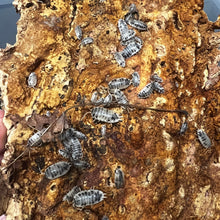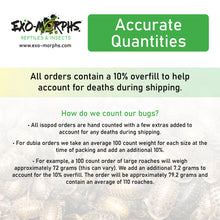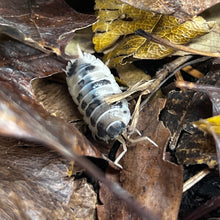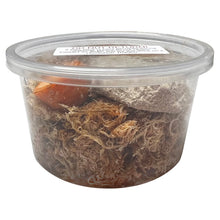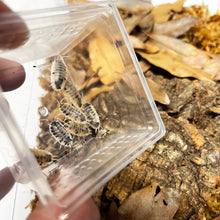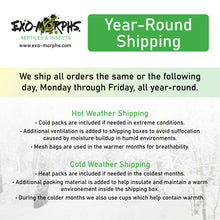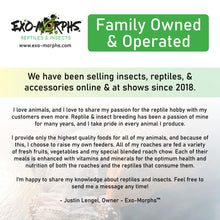
Porcellio laevis is a species of woodlouse, also known as a smooth or porcelain woodlouse, native to Europe. They're often kept as pets in vivariums and terrariums due to their interesting appearance and ease of care. The name "dairy cow" comes from their black and white coloration, which resembles the pattern of a dairy cow.
Here are some key points about Porcellio laevis:
-
Coloration: As mentioned, they have a striking black and white coloration, with some individuals having varying degrees of gray or bluish tones. The black and white patches often alternate across their back, resembling the patches on a dairy cow.
-
Size: They are a fairly large isopod species, reaching around 1 to 1.5 cm in length when fully grown.
-
Habitat: In the wild, Porcellio laevis typically inhabit damp areas like forests, where they feed on decaying plant matter. However, they're commonly kept as pets in captivity.
-
Care: Porcellio laevis is easy to care for, making them popular pets. They require a moist environment with plenty of hiding spots, such as pieces of bark or small shelters. They feed on a variety of organic matter like leaf litter, vegetables, and commercial fish food.
-
Reproduction: They reproduce quickly in captivity. Female isopods carry fertilized eggs in a brood pouch on their underside, where the eggs hatch into miniature versions of the adults.
-
Role in Vivariums: In addition to being interesting pets in their own right, Porcellio laevis can serve a useful role in vivariums by aiding in the breakdown of organic waste, helping to keep the enclosure clean.
Overall, "dairy cow" isopods like Porcellio laevis are fascinating creatures to observe and relatively low-maintenance, making them popular among hobbyists who keep exotic pets.
As with all of our insects, live arrival is guaranteed.











